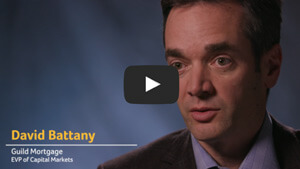Read Beyond the 25 BPS
The FOMC raised its benchmark rate by 25 basis points to a new range of 4.75%-5.00% on Wednesday, a middle ground policy move made in the hope of tampering inflation without further harming the banking system. The raise marks the 9th consecutive rate hike since the Fed began hiking in May of last year and brings the target fed funds rate range to the highest level since September 2007. While the central bank’s monetary policy has been aimed at correcting inflation, it has also revealed hidden weaknesses (e.g., entities whose balance sheets relied on low interest rates).
Many market observers were calling for the Fed to pause hikes due to the banking crisis, but the situation is still so new that the Fed doesn’t have a read on the fallout yet. Raising rates in the face of a banking crisis signals that the Fed believes there is work remaining to be done. The Fed did discuss the recent turmoil, with the Committee estimating that it will restrict credit going forward for households and businesses and will weigh on economic activity. The extent of these effects is uncertain, though the statement added that “the U.S. banking system is sound and resilient and the Committee remains highly attentive to inflation risks.”
If you haven’t already, we recommend reading our latest blog, March Housing Market Update: After Silicon Valley Bank Collapse, which details recent changes to the composition of bank portfolios and how we got to this point. Silicon Valley Bank’s cardinal sin was to buy Treasuries and MBS without hedging the interest rate risk. When the bank was met with a deluge of withdrawal requests, it sold its available-for-sale securities at a loss in the hope it would cover withdrawals.
Tightening Credit Conditions
The more credit tightens on its own, the less the Fed will need to do to bring down inflation. Keep in mind that any general restriction of credit will take some time to play out. So far, the Fed is not seeing any decrease in credit from the banking crisis, and therefore they didn’t feel the need to pause or cut rates. The Fed facility and discount window lending are working as intended to provide liquidity to the banking system and aggregate deposit outflows from regional banks have stabilized. From a consumer credit perspective, the impact of further rate hikes will likely continue to be felt by borrowers, particularly in mortgages and credit cards.
The updated Summary of Economic Projections indicated one more 25 basis point hike, but to counterbalance the softening language around future rate increases, the Committee added the assessment that it will be appropriate to keep rates “restrictive for some time.” While the Fed expects another raise, the increasing focus on the banking sector has market expectations pricing in no further hikes and 75 basis points of easing by year-end. Chair Powell sounded more sheepish than dovish in his press conference, though said that “participants don’t see rate cuts this year” and that “rate cuts this year are not our baseline expectation.”
The fed funds futures will get more hawkish and markets will move toward being “risk-on” the more sound bets become that the banking crisis is over.
Another False Start?
As real as this Fed pivot feels, we cannot forget about two previous false starts that hurt mortgage P&Ls. Last July, mortgage rates dipped 70 basis points and S-curves went hypersonic. Then, after Chair Powell’s Nov 30th speech where 25 of 26 paragraphs were blatantly hawkish yet the screen chose to hear “rate cuts are coming,” that correction evolved into a negative feedback loop because banks happened to be moving certain assets from held for investment to available for sale, either for liquidity purposes or perhaps because they saw a markup event on the horizon.
2022 ended with a couple of moderating CPI prints, convincing the bond market that the Fed was accomplishing its mission. However, the January and February CPI prints, along with a robust January payrolls report, caused investors to re-think that forecast, spiking rates. The latest banking crisis has massively increased uncertainty over future Fed moves, bringing volatility back to the fore. MBS spreads are a function of interest rate volatility: when interest rate volatility rises, mortgage backed securities underperform Treasuries. The punch line currently is that this uncertainty has caused mortgage backed securities to hold relatively steady while Treasury yields fall.



